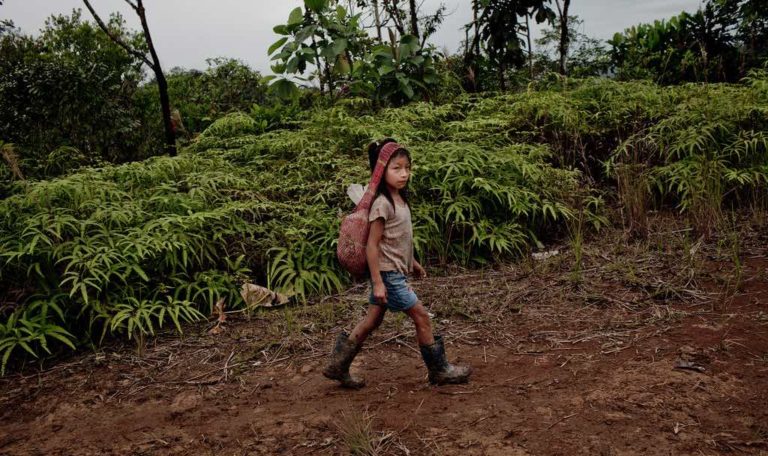In the last decade, progress has been made for the rights of the indigenous people of Ecuador. But despite a favourable legal context and numerous promises made by the government, their rights are still under threat by foreign economic interests.
Thanks to the award-winning documentary Children of the Jaguar, the struggle of the Kichwa de Sarayaku indigenous community of Ecuador has become a central testimony for indigenous’ rights struggles in the Amazon. Filmed in 2011 and co-produced by Eriberto Gualinga of the Sarayaku and Amnesty International, the documentary depicts the Sarayaku’s daily struggle and resistance. Witnessing their traditional lands violated by a foreign oil company which placed approximately 1433 kilograms of explosive on their territory without any consultation, they decided to stand firm in defence of their rights.
The Sarayaku’s resistance culminated in the self-organized trip to the Inter-American Court of Human Rights (IACHR) in Costa Rica to claim their rights against the Ecuadorian government. On June 2012, the IACHR ruled in favour of the Kichwa community holding, unanimously, that the State of Ecuador was responsible for the violation of the rights to consultation to indigenous communal property and to cultural identity as well as for jeopardizing the right to life and personal integrity.
A few years earlier, in 2008, under President Correa’s leadership, Ecuador became the first country in the world to grant nature the right to “integral respect for its existence and for the maintenance and regeneration of its life cycles, structure, functions and evolutionary processes” within its Constitution. Furthermore, the Constitution guarantees Ecuadorian citizens the legal authority to bring forward litigation on behalf of nature in the case of rights violations.
In May 2017, Lenín Moreno was sworn in as Ecuador’s new president. After serving as vice president for six years, Moreno campaigned against his predecessor Correa whose presidency had been increasingly criticised by indigenous groups. Moreno made efforts to improve the government’s relationship with its indigenous population, and a month after taking office he met with the leaders of the National Confederation of Indigenous Peoples of Ecuador (CONAIE), Ecuador’s largest indigenous organisation. At the meeting, CONAIE presented their concerns about the continuing conflicts over land and water resources and asked the new president to protect indigenous human rights defenders.
While the new government initially brought hope of change, impatience grew when it was found that Moreno had approved new oiling and mining projects. A march from the Amazons to the capital Quito was organised where they demanded “dialogue with results”. The march took two weeks and thousands of people joined it on the way. This resulted in a new meeting with Moreno where he promised not to grant any new projects.
Children of the Jaguar and the Amazon to Quito march shows that Ecuador’s indigenous movement is resilient and well organised. The IACHR decision was a major success for indigenous people’s rights in the Amazon, but it is now up to the Moreno government to live up to its promises.

